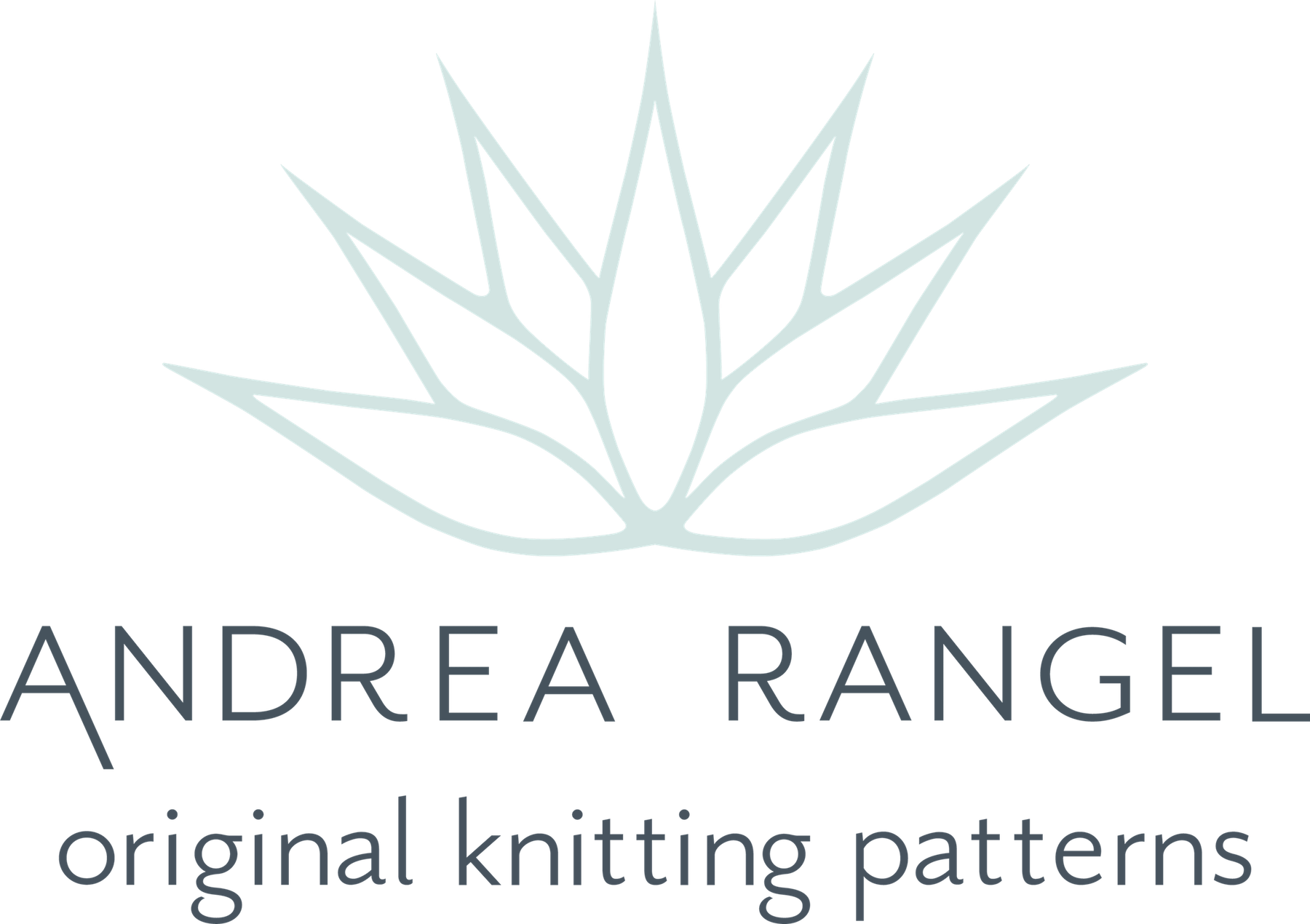Vym, or Why I Knit from Patterns
I spend most of my knitting time swatching and working on design projects, which is really creative, engaging work, but it also takes a lot of effort and thought. It's a huge treat to pull out some stash yarn and just follow the directions that someone else has already written up.
 |
| Vym by Rebekkah Kerner |
It's hard to make time for knitting from patterns, but I do schedule it into my work day now and again, and not just for fun (though it is really fun and relaxing!) I was a knitter for years before I used a pattern, but when I decided to really start designing patterns, I realized that in order to be a good writer, I would need to be a good reader. I learned what makes a good pattern (and a bad one, for that matter) by knitting from patterns. I learned about what needs to be included, where stitch counts are helpful, and why schematics are so vital. By knitting from a lot of patterns, I learned some standard ways of making socks, sweaters, and hats. They taught me about repeats and why math matters so much in knitting (hello, gauge!)
So now that I know all of those things, why do I still find it valuable to knit from patterns? There is always more to learn. There is always something I didn't think of. Knitting from patterns is a vital part of my professional growth because when I follow someone else's instructions, I'm given permission to just roll with it. I don't have to do it my way, but instead I get to try out a new way. I learn to think outside my established style of designing when I knit from a pattern, which gives me new tools to take back to my own designs.
Vym, for example, was the perfect side project. (From Twist Collective, Spring/Summer 2010) Rebekkah Kerner used a standard sock shape - top down with heel flap, short row heel turn, and gusset shaping - to create a bold and clever pattern.
 |
| Vym by Rebekkah Kerner |
My a-ha moment in knitting these socks had to do with the needle sizes. Kerner recommends using multiple needle sizes to adjust for the density and lack of elasticity of the color work. It's nice to have a sock stitch pattern that draws in a bit, like some kind of ribbing, so that it will go over your heel, but still be snug around your foot, but there are so many wonderful stitch patterns that don't include those properties. Color work is particularly inelastic, so lots of color work patterns call for extra shaping that might not be necessary with a different stitch pattern. Kerner's solution was to use a larger needle for the ankle, and a smaller one for the foot. Simple and effective! The socks are pretty short compared to the standard, and I think that if they were much taller, they would require a bit of calf shaping, but as is, they fit perfectly and slip on and off easily as well.
I was a bit hesitant about the short length, but after knitting and photographing them, I think they look fantastic. To wear them with my tall boots, I wear my leggings over them and inside my boots, which works really well for comfort, but doesn't show off the socks. I'm looking forward to warmer weather when I can wear them with my Mary Janes and a skirt, which is, I think, their true purpose! Besides, them being a bit short meant that the knitting went really fast! (No second sock syndrome for me!)
 |
| Vym by Rebekkah Kerner |
The color pattern is really intriguing, and while I wasn't able to memorize it or easily follow it based on earlier repeats, it wasn't difficult, and I only had to tink back for incorrect color work a time or two because I wasn't paying attention.
So thank you, Rebekkah Kerner for an educational experience, and a very sweet project that makes me happy every time I put them on my feet.
I do also have to mention the yarn I chose for this project - Hazel Knits Artisan Sock in Lichen and Sassafras. Last year when I was helping out in the Hazel Knits dye studio, I particularly requested a rich gold color after seeing this luminescent lichen growing on a wall near the studio. I've used this color to design with before (with Jam Session in Nerine from Clotheshorse, Winter 2012/13), and I have no doubt that I'll use it again. Lucky me to get to wear it on my own socks too! And if you haven't taken a close look at Sassafras, do it. From far away it may just look like a wonderful semi-solid gray, but there are so many more colors in there. (Yes, I adore Hazel Knits - see Char from Woodsmoke & Ash for another example of Sassafras.)
 |
| Vym by Rebekkah Kerner |
How about you? What have you been knitting just for you? Any good lessons learned from patterns?
